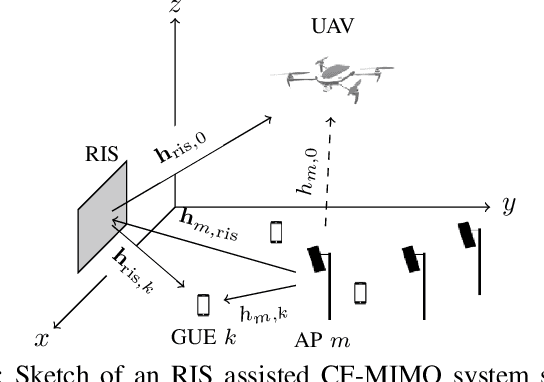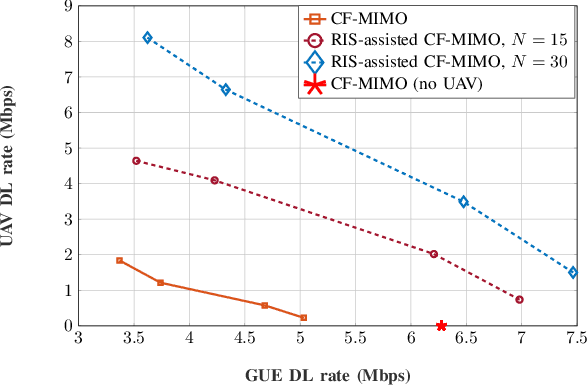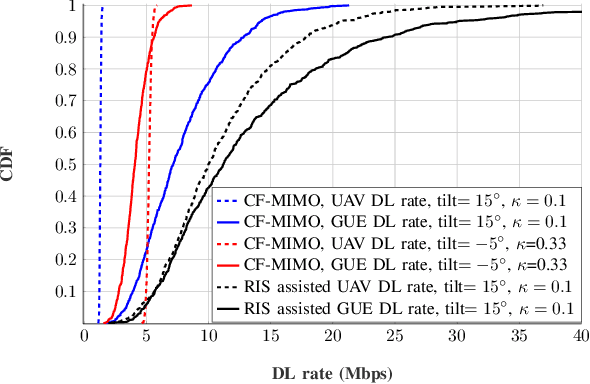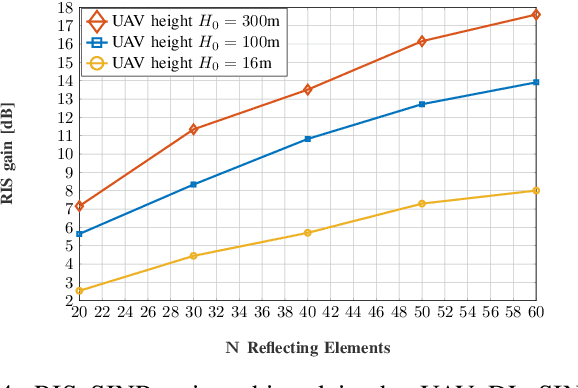Improving UAV Communication in Cell Free MIMO Using a Reconfigurable Intelligent Surface
Paper and Code
Sep 21, 2022



Communication with unmanned aerial vehicles (UAVs) in current terrestrial networks suffers from poor signal strength due to the down-tilt of the access points (APs) that are optimized to serve ground users ends (GUEs). To solve this, one could tilt the AP antenna upwards or allocate more power to serve the UAV. However, this negatively affects GUE downlink (DL) rates. In this paper, we propose to solve this challenge using a reconfigurable intelligent surface (RIS) to enhance the UAV communication while preserving the 3GPP- prescribed downwards antenna tilt and potentially improving the DL performance of the GUE. We show that under conjugate beamforming (CB) precoding and proper power split between GUEs and the UAV at the APs, an RIS with phase-shifts configured to reflect radio signals towards the UAV can significantly improve the UAV DL throughput while simultaneously benefiting the GUEs. The presented numerical results show that the RIS- aided system can serve a UAV with a required data rate while improving the GUEs DL performance relative to that in a CF- MIMO system without a UAV and an RIS. We support this conclusion through simulations under a varying numbers of RIS reflecting elements, UAV heights, and power split factor.
 Add to Chrome
Add to Chrome Add to Firefox
Add to Firefox Add to Edge
Add to Edge